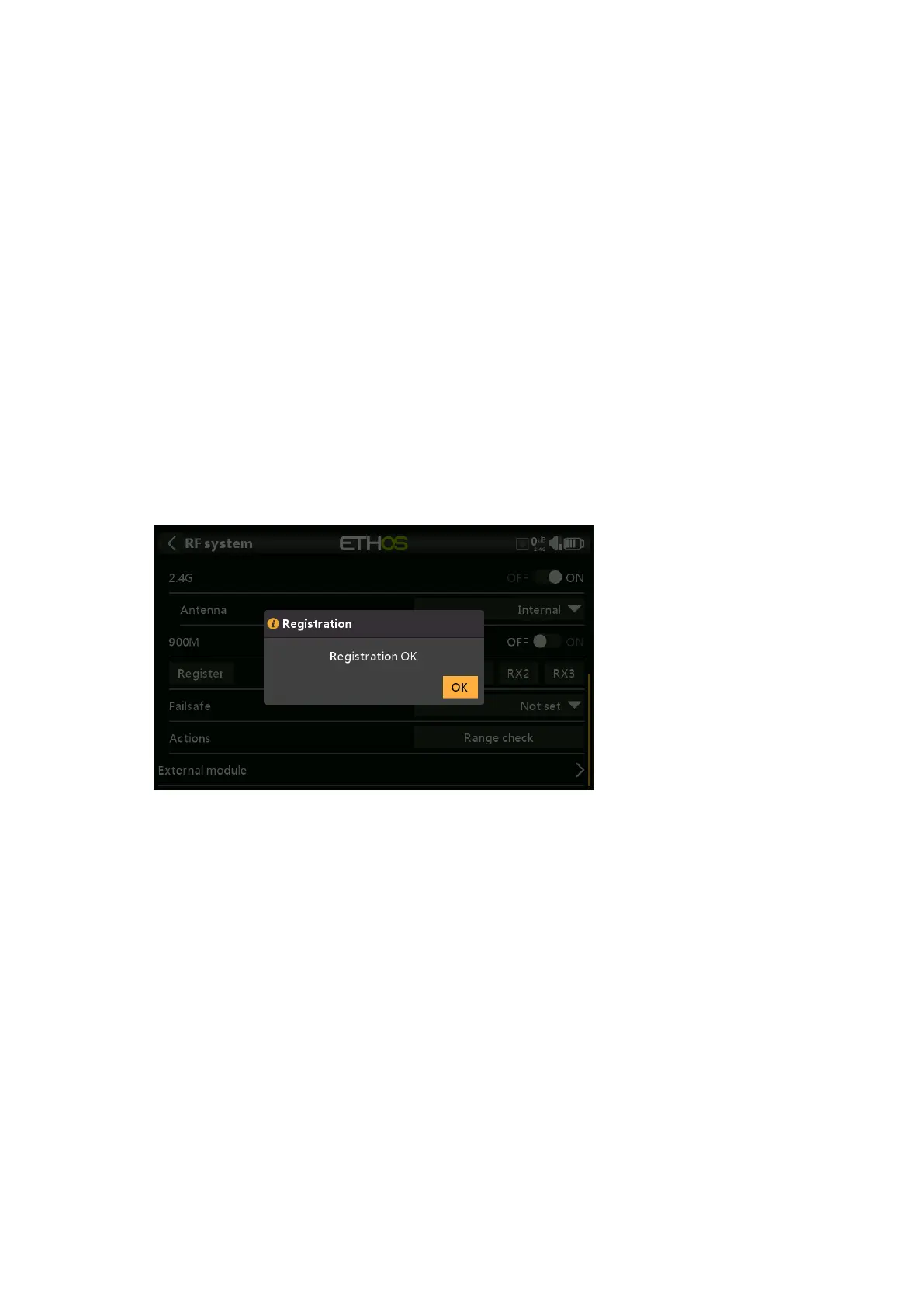Ethos v1.5.7 and X18, X20 series User Manual
3. At this stage the Reg. ID and UID can be set:
Registration ID: The ‘Registration ID is at owner or transmitter level. This
should be a unique code for your radio and other transmitters to be used with
Smart Share. It defaults to the value in the ‘Owner registration ID’ setting
described above at the start of this section, but can be edited here. If two
radios have the same Reg. ID you can move receivers (with the same Receiver
No for a given model) between them by simply using the power on bind
process.
RX name: Filled in automatically, but the name can be changed if desired. This
can be useful if you are using more than one receiver and need to remember
for example that RX4R1 is for Ch1-8 or RX4R2 is for Ch9-16 or RX4R3 is for
Ch17-24 when rebinding later. A name for the receiver can be entered here.
The UID is used to distinguish between multiple receivers used simultaneously
in a single model. It can be left at the default of 0 for a single receiver. When
more than one receiver is to be used in the same model, the UID should be
changed, normally 0 for Ch1-8, 1 for Ch9-16, and 2 for Ch17-24. Please note
that this UID cannot be read back from the receiver, so it is a good idea to label
the receiver.
4. Press [Register] to complete. A dialog box pops up with 'Registration ok'. Press
[OK] to continue.
5. Turn the receiver off. At this point the receiver is registered, but it still needs to be
bound to the transmitter to be used. It is now ready for binding.
Phase Two – Binding and module options
Bind
Receiver binding enables a registered receiver to be bound to one of the transmitters
it has been registered with in phase 1, and will then respond to that transmitter until
re-bound to another transmitter. Be certain to perform a range check before flying the
model.
Warning – Very Important
Do not perform the binding operation with an electric motor connected or an
internal combustion engine running.
1. Turn the receiver power off.
2. Confirm that you are in ACCESS mode.
